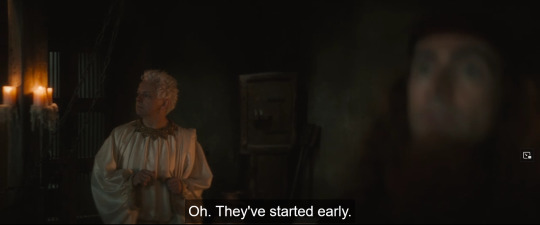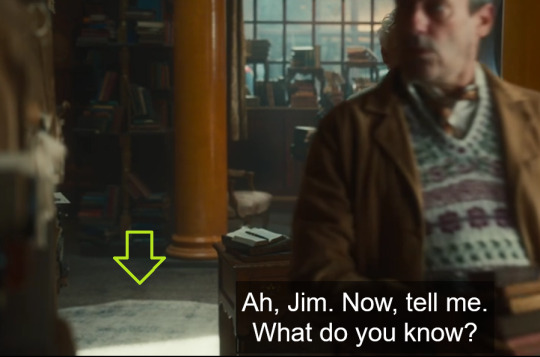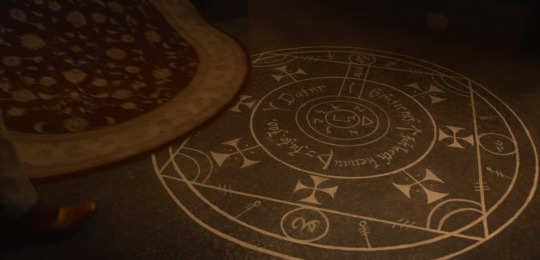#witchburning
Explore tagged Tumblr posts
Photo

"It was morality that burned the books of the ancient sages, and morality that halted the free inquiry of the Golden Age and substituted for it the credulous imbecility of the Age of Faith. It was a fixed moral code and a fixed theology which robbed the human race of a thousand years by wasting them upon alchemy, heretic-burning, witchcraft and sacerdotalism.“ — H.L. Mencken
[Poetic Outlaws]
19 notes
·
View notes
Text

this fucking picture taps into such a disgustingly horny part of my brain… holy fuck, two absolutely beautiful big boys in one pictureee? who is spoiling me so much? why am i being spoiled? love it <3



and just some bonus pictures of patrick just because he is like, über hot to me… oh and sorry about his fly being unzipped guys, i totally forgot to zip it back up for him after gobbling his cock before he went on stage :)
#vera ✩#these urges and wants inside of me cannot be normal#i want him to shove that gun inside of me#as far as it can go#i will not apologise#patrick kremer#traumatic#witchburner#nema#baxaxaxa#jon kristiansen#metalion#slayer
14 notes
·
View notes
Text
jess make up the name of a stupid fake star wars planet you can remember how to fucking spell 2024 challenge (failure)
#Oueyjo?? really bitch you think you can handle that#in Milk Run I had to check Ara..tarox...?? like every time I used it and I think it's literally a place in Greece I forgot was real#in the witchburning fic it's Melas because I was trying to make it easy on myself and that's just Salem backwards lol#yeah sooo I guess you could say I shock and delight myself with my own wit#but to be honest even that i keep fucking up#my writing
21 notes
·
View notes
Text

Witchburner - Blood of Witches 06/06/o 007
#metalcultbrigade#metal#heavy metal#artists on tumblr#art#thrash metal#thrash#speed metal#witchburner
2 notes
·
View notes
Text
Btw catholics who always have to point out that protestants burned ~more~ witches than they did as if that means catholics doing ~less~ of it is just fine whenever witchburnings are mentioned are such a joke
#i dont think its that accurate that the difference in death toll was high enough for this argument to be made but#its probably hard to find sources that arents catholic propaganda if u google that shit#also witchburnings werent the only time christians were murdering ppl on the basis of participating in pagan/'magic' traditions#u believe shortly after roman empire became christian it was not a thing n christianization of europe went on without bloodshed and#same about colonization n christianization of latin america? cute... ur dumb go read a book
3 notes
·
View notes
Text
youtube
"Witchburner" by Witchery - From "Witchburner" EP (2019 remaster, originally released in 1999)
0 notes
Text
5 Good Omens Timefucks that Haunt Me
1.


Why is this here? Why is this line included? Is it just to add texture, to imply that larger world of corporate fascism of which Crowley and Aziraphale are subjects and victims and little worker bees? If so, why "They've started early" specifically? Why not "I wouldn't have expected that shrub to be the first to go" or "Aw, I liked that rock formation"?
Crawly doesn't make this comment in an offhand way: he sounds a bit taken aback and not thrilled that things have kicked off sooner than he anticipated. But it doesn't ultimately seem to make any difference to this scene, so why do we, the audience, need to know Hell started early?
2.


This one I'm not as confident will turn out to be significant, because iirc it appears in the book, which was a complete story when written, and because it serves a narrative purpose: it puts Agnes Nutter in charge of the situation, not her murderers. By backfooting Witchfinder Major Pulsifer, Agnes startles him enough she's able to walk past him without Pulsifer seizing her and discovering the extra 80 lbs of gunpowder and roofing nails in her skirts.
But. Agnes Nutter's sense of time is Nice and Accurate, and she notices the witchburning party are late and remarks on it to herself before she says anything to Pulsifer. So assuming a few minutes to position Agnes, tie her to the stake, and read the charges and conviction against her, Pulsifer and Agnes' neighbors are 12-15 minutes later than they should be. Why?
If the book answers this question, I don't recall; the show does not. And again, it seems to make no ultimate difference to this scene.
I'm not saying this was even purposely included in S1 as a timefuck. I am suggesting that as Gaiman seems to be fucking with time or timelines in this story, even if he and Pratchett didn't plan it like this when discussing the sequel, a retcon is hardly out of the question.
3.

As others have pointed out, Shostakovich's Symphony No. 5 is 45-55 minutes long. If you're listening to it on 78s instead of LPs because you are a CRAZY PERSON, it's going to take you more like 1 hour 5 minutes, because one side of a 78 holds, at most, 5 minutes of music, so every 5 minutes you have to get up and flip or switch the record.
Shostakovich wrote his 5th symphony in response to criticism in the state newspaper (possibly penned by Stalin himself) that his previous work didn't suck the Communist Party's dick hard enough--the kind of criticism that put him in danger of being sent to prison or killed. At the time it was first performed in 1937, Symphony No. 5 was considered a massive triumph, walking the line perfectly between Shostakovich's artistic standards and the Communist Party's demands of him.
The choice is symbolically significant, but it's a symphony, so whoever's censoring it isn't censoring lyrics or information. Again, why? Why is a 45-55-minute symphony only 21 minutes long? What did the time thief do with the 24-34 minutes?
4.
Here's the rug that covers the portal to Heaven in Episode 1:

Here's the rug in Ep. 2:

Aziraphale does not change this rug for the party. We know this bc we see it in Episode 5 when Mrs Sandwich enters the bookshop and the party is in full swing:

Now here's Aziraphale moving the circular rug to expose the portal to Heaven:

But here's Crowley, putting the rug back:

Why are there two different rugs?
5.
Every end credits track has the first line of "Everyday" embedded in it But after the line from "Everyday," at the end of Episode 4, the theme skips twice like a vinyl record, and then is stopped by whoever controls the turntable and restarted, with several seconds of music having been skipped over.
This is not the first time it has mattered to a character in Good Omens what we in the audience see and hear. I argue here that God asks Aziraphale what he did with the flaming sword She gave him in order to show us the audience who Aziraphale is. God also addresses us the audience directly in S1, not only narrating about characters omnisciently but speaking to us about Herself in first person.
Now we evidently have a second character who has gone meta and is changing what we the audience experience of this story, and--indications are good--the story itself.
#good omens#good omens s2#good omens meta#good omens timefucks#good omens chronology#good omens discontinuity#good omens as metafiction
665 notes
·
View notes
Text




Witchburner from trench crusade.
73 notes
·
View notes
Text
My sharpest childhood memory is going to see a witchburning.
I was young, only a handful of years old. Back then, I was still spending most evenings stomping around in the brush - or sitting in the nooks of trees, and thinking obscure, solitary thoughts. As with anything that occured outside the distance I could casually wander from the house, I was dragged there without a say in the matter.
I'd never seen such a large gathering of people at the school, other than for the fête. The treeless field extended from the schoolyard, encompassed the vegetable garden I was not yet allowed to tend, and pushed up against the tree-lined way that ran perpendicular to the lane. It was filled with people, a thrumming, loud crowd, surrounded by loose tendrils of stragglers in the dimming light.
In the centre, while the people trampled the ground on which I would sit at lunchtime, over their heads loomed a pyre.
When the time came, I was hoisted up, awkwardly held at adult height to see the stage. Kindling piled upon, and stuck out from, the hastily-woodworked rostrum - all of them, each and every one, of the most beautiful type of vines and branches that lay on the forest floor. The crowd was fixated, however, on a different fuel.
I can't say whether I understood what was happening or not. Though, even just from how she was dragged and shoved, it was obvious that her warmth was unusual. She was not detached, not above it as a martyr awaiting salvation - she was embedded firmly in this moment, and she was happy with it. She recieved the blows and scratches of the crowd like soft touches from old friends. When she was tied to the stake, she commanded the small stage, as though we had all ammassed just to listen to her.
She didn't say a word, though, and even the preacher's shouts bent past me, like arrows. I stared, a bubble of perfect silence in the noise.
She didn't fly away, didn't vanish in a flash of light. No flock of bats or brimstone smoke emanated from the schoolyard that night. I saw the flames burn linen, fine flaxseed oil bubbling out from threads, and I saw blackened leather flake off into acrid white ash. Wood and bone groaned and popped under heat, snapping suddenly to release showers of sparks. I will make no metaphor of it, I watched a women burn to death, screaming and sobbing for her mother, that night.
She was solitary, too, in her last moments, blind to the rest of us - blind to anything but the bright fire and the brighter pain. But that was out of her control. While she still had a choice, she smiled, looked upon us all as family. She did not do this out of spite, I know it. She didn't perceive the preacher at all, could not care less for his rage and passion. Her gaze swept over the chanting crowd, not with fear, not searching for a saviour, but like a violinist searching the audience. She was a witch, this I am sure of.
Just before they lit the fire, her gaze fell on me. She stopped, everything stopped. For a moment, I felt her bravery, her love. She winked at me, and then, she was gone.
52 notes
·
View notes
Text

Fronds of Benevolence by Andrew Walter
This adventure for Troika! makes me want to play Troika! (which is more than I can say for the core book). It's one that, like Witchburner by Luka Rejec, has a ticking clock so that things HAVE to happen in the adventure.
9 notes
·
View notes
Note
who is this beautiful patrick guy someone tell me about him
https://www.tumblr.com/child0feden/772282355707707392/this-fucking-picture-taps-into-such-a-disgustingly
hey here, anon!
that gorgeous german man would be patrick kremer and he is the owner of iron bonehead productions, he was also the drummer and vocalist for nema, vocalist for witchburner and he is the current vocalist for baxaxaxa
unfortunately he is not really as gorgeous anymore, he does look good but just not really my type you know? the late 90s and early 2000s are definitely my favourite eras of him! the pictures i included in my first post about him, the one of him performing on stage? they were taken in 2002
here is all of the pictures from that concert in 2002, definitely his hottest era in my opinion!





you can find a really great little interview with him right here by bardo methodology who in my opinion, always execute some of the best interviews with people…
he has done quite a few really neat things in his life and he just seems like a super genuine and sweet guy, the childhood picture included in that interview i linked for you is absolutely adorable <3
14 notes
·
View notes
Text
More Trench crusade!


Hachi and Margrete
Hachi and Margrete have become fast brother and sister in arms, two people from disparate parts of the world who stand united in their pilgrimage.
Hachi comes from the east. Nobody truly knows how he made it past the hellscape between his homeland and the European front. Regardless of how, Hachi now fights with the Pilgrimage of Saint Joan towards New Antioch in the middle east, traveling back in the direction of his homeland through the fires of war. When he first arrived in Europe, he had little knowledge of the war and the religion of the Pilgrimage. After much time with the pastors, Hachi was a convert and joined up with the pilgrimage. He follows a code he has called "Bushido," an unfamiliar word to those in the pilgrimage, yet his personality, fervent zeal and firm honour have led him to become a somewhat popular member of the pilgrimage.
Margrete hails from France, and met the pilgrimage there. As they moved through the country, Margrete joined up with the intention of becoming a stigmatic sister. She was found wanting, and not allowed to join the Stigmatic Sisterhood of d'Arc. During the next battle, she took the weapon and shield off a dead man and raced into the fight herself. It was in this battle she met and became fast friends with Hachi. Few can stand to the pair of them with their shields and trench guns, and Margrete's pious nature is seen as second only to the Sisterhood of d'Arc, and the fury she fights with on the battlefield is second only to the Witchburners.
#noirmodels#customized models#kitbash#noirfluff#tabletop miniatures#tabletop mini#wip#trench crusade lore#trench crusade#miniatures#custom miniature#indie tabletop games#homebrew lore#Pilgrimage of Saint Joan#yes he is a tekken reference
4 notes
·
View notes
Text


9 notes
·
View notes
Text
terfs love to pretend that they would be burned at the stake if they lived in the 1800 when in fact they would be the ones reporting women to the witchburner
7 notes
·
View notes
Text
No, I dont think its a funny joke when some aloof ironic cool christian girlies go 'eww cringe jesus bible' whenever someone brings up a tiniest bit of interest in paganism or occultism. I am not saying these communities dont have annoying people in them. But given christianitys history with witchburnings and colonialism in the americas and attempts to wipe out any pagan religion wherever they went being justified with dehumanizing whoever they considered 'pagans' or (supposedly) involved in witchcraft its pretty damn crass and bad taste. You dont get to decide which beliefs are 'demonic' or 'evil' and they are not automatically demonic or evil because some christian said so - I dont accept it and I dont have damn spanish inquisition threatening to torture me to pretend i do
#no christianity isnt in any way superior to even cringiest larpy neopagan n wicca types. not ever#dont expect ppl to be nice to christians if u giggle at cultures u were trying to wipe off the face of the earth n ppl u murdered. maybe#esp as a white american who lives on native americans' land whose 'paganism' was used as a justification of what was done to them
30 notes
·
View notes
